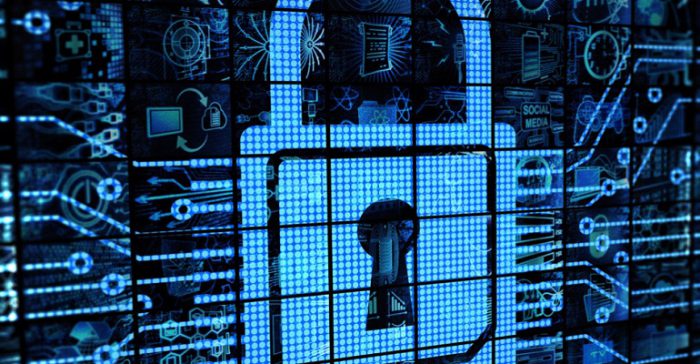Follow the Patents: The Internet of Things has Arrived for Utilities
Electric Light & Power, April 25, 2017
As the Internet has matured, more and more applications are being found for it. In addition to e-commerce, social media, banking, dating, Wikipedia and Over the Top video, there is the “Internet of Things” or “IoT.” This technology refers to the linking of connected devices so they can communicate with humans or with each other. Within the Internet of Things world there are man-to-machine and machine-to-machine protocols.
The “Smart House” or “Smart Home” (both terms are used interchangeably) has become a reality. Using IoT technology, a homeowner can make sure he locked the doors, check and change the thermostat settings, turn on or off lights and be notified if anything out of the ordinary (like a smoke alarm goes off) occurs.
The IoT has many applications for electric utilities. One that is being implemented across the country is the use of “smart meters” that communicate with the utility, eliminating the need for a guy in a pickup truck driving from house to house to read meters. Additional applications include immediate notification of a power outage before any customers have to call in to report it, or remotely monitoring the performance of transformers, power centers, substations and other equipment.
[bctt tweet=”Follow the patents and you’ll find electric utilities are investing in the #InternetofThings. ” username=”ZonditsEE”]
The granddaddy of IoT patents with applications for electric utilities is U.S. Patent No. 6,437,692 for a “System and Method for Monitoring and Controlling Remote Devices” from Statsignal Systems, Inc. This patent was granted way back in 2002, it has a 1998 Priority Date, and it has over 1,000 Forward Citations, making it an uber-foundational patent. It describes a system that monitors utility meters via a network of sensors adapted to specific data input. A local gateway translates and transfers the data to a computer that stores it so it can be retrieved by the user.
Another early IoT patent with applications for electric utilities is U.S. Patent No. 7,209,804 for a “System and Method for Providing Remote Monitoring of Voltage Power Transmission and Distribution Devices” from Power Monitors, Inc. It was published in 2007, and it has a 2003 Priority Date and over 70 Forward Citations. This patent provides communication with a power device and reporting the electrical value of the device in conjunction with its operational parameters.
Yet another early IoT property is U.S. Patent No. 7,346,463 for a “System for Controlling Electrically-Powered Devices in an Electrical Network” from Hunt Technologies, LLC. This patent was issued in 2008, it has a 2001 Priority Date, and it has over 150 Forward Citations, so this is also a foundational patent. In describes a remotely controlled, electrically powered system in an electrical network that uses a wireless transceiver that communicates bi-directionally to either turn a device on or off or notify the user that has been turned on or off.
As we do in each issue of Follow the Patents, we will look into the future today by examining four recent IoT patents with applications for electric utilities.
U.S. Patent No. 9,057,746 for “Determining Information about Devices in a Building Using Different Sets of Features” is from Sense Labs, Inc. and it was issued in 2015. It covers a system for monitoring the electrical usage of devices for a user. It provides current data immediately, and this data can be compared to historical data to determine if usage has changed. While this patent has applications for electric utilities, it also has applications in the Smart House and Smart Building segments.
U.S. Patent No. 9,052,216 for a “Universal Internet of Things Apparatus and Methods” is from Excorda, LLC and was also published in 2015. The patent describes a system that collects, filters and shares data for analytical purposes from a network of sensors over a hard-wired or wireless network. This data can be used to analyze various tiers of the power grid, from regional or municipal right down to an individual customer. The system also stores and reports energy quality and metrics based on the analysis of the energy measurement data, external sensor data, and other sources.
U.S. Patent No. 9,432,378 for “Internet of Things Security” is from independent inventor Jerome Svigals and was issued just last year. It is a good example of “Machine-to-Machine” protocol, and it has obvious applications for electric utilities. The patent focuses on improving the security of communications networks by enabling smart devices such as Smart Meters (we covered Smart Meter patents in the December 26, 2016 Follow the Patents) to communicate with each other over a network without human intervention. It uses smart devices that are equipped with a bi-directional chip or logic device that sends an identifier message that uniquely identifies the sending device. The receiving device screens all incoming messages for the identifier code from each smart device to insure it authenticity.
U.S. Patent No. 9,510,195 for a “Secured Transactions in Internet of Things-Embedded Systems Networks” is from STMicroelectronics International N.V. and it was granted just last November. The patent details a secure network-enabled device that operates with no human input. Data is collected from devices such as Smart Meters and is communicated to and from the network via a transceiver. The system insures the integrity of the data by continually testing it against a transaction protocol that governs the stream of data bits communicated to the secure network-enabled device.
